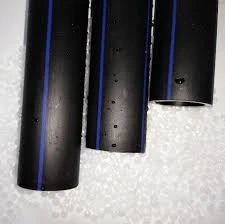дек. . 10, 2024 10:42 Back to list
pp welding rod
Understanding PP Welding Rods A Comprehensive Guide
Polypropylene (PP) is one of the most extensively used thermoplastics, cherished for its versatility, resistance to various chemicals, and durability. With the rising demand for constructing robust and long-lasting products, the use of PP welding rods has gained significant popularity across various industries. In this article, we will delve into what PP welding rods are, their applications, advantages, and essential techniques for effective welding.
What Are PP Welding Rods?
PP welding rods are cylindrical sticks made of polypropylene, designed primarily for welding or joining polypropylene materials together. These rods are produced by extruding melted polypropylene through a die, subsequently cooling it to solidify the shape. They come in various diameters and lengths to accommodate different welding requirements. PP welding rods are typically used in conjunction with industrial welding tools like hot air welders, extrusion welders, or even handheld tools to achieve optimal joining results.
Applications of PP Welding Rods
PP welding rods are notably utilized in several applications, predominantly in industries that manufacture or process polypropylene products. Some key sectors include
1. Construction In the construction industry, PP welding rods are used to create waterproof membranes, storage tanks, and other features that benefit from the durability and lightweight nature of polypropylene. 2. Automotive The automotive industry incorporates PP in parts due to its lightweight and chemical-resistant properties, making welding rods essential for repairs and modifications.
3. Marine Yacht and boat manufacturers often use PP for hulls and interior fittings. PP welding rods are employed for assembling components and ensuring watertight seals.
4. Packaging The packaging industry takes advantage of PP's resistance to moisture and chemicals, using welding rods to create custom containers and packaging solutions.
5. Waste Management PP welding rods are also influential in creating waste management solutions, such as liners for landfills and tanks for holding corrosive materials.
Advantages of Using PP Welding Rods
1. Chemical Resistance One of the primary benefits of polypropylene is its excellent resistance to an array of chemicals, making it suitable for various applications where exposure to aggressive substances is a concern.
pp welding rod

2. Lightweight PP's low density makes it a preferred material in applications where weight is a critical factor, such as in automotive and marine industries.
3. Durability PP materials exhibit long-term stability, providing strong welds that can endure mechanical stress and environmental factors.
4. Ease of Welding PP welding rods allow for efficient joining of polypropylene materials, ensuring a streamlined welding process that can be easily mastered with practice.
Techniques for Effective PP Welding
Successful welding with PP rods requires adherence to specific techniques, including
- Preparation Always begin with cleaning the surfaces of the polypropylene components to remove dirt, grease, and any contaminants. Proper preparation ensures strong adhesion.
- Welding Temperature Understanding the appropriate welding temperature is crucial. The melting point of polypropylene typically ranges from 160°C to 180°C (320°F to 356°F). Using tools that offer precise temperature control is essential.
- Speed and Pressure The speed of welding and the pressure applied affects joint integrity. A consistent speed allows for even heating, while appropriate pressure ensures proper fusion of materials.
- Cooling Time Allow adequate cooling time post-welding to ensure the joint solidifies completely and maintains its integrity under stress.
Conclusion
PP welding rods play an integral role in various industries by facilitating the effective joining of polypropylene materials. Their properties—such as chemical resistance, lightweight nature, and durability—make them ideal for numerous applications. By mastering welding techniques and understanding the advantages of PP welding rods, manufacturers and repair technicians can ensure optimal results in their projects, ultimately leading to enhanced product performance and longevity. Whether you are involved in construction, automotive, marine, packaging, or waste management, incorporating PP welding rods into your processes can yield significant benefits.
-
Durable PP Rigid Sheet: Lightweight, Chemical Resistant Solutions
NewsAug.21,2025
-
PVC Grey Sheet for Extraction: Chemical Resistant & Durable
NewsAug.19,2025
-
Durable PVC Pipe Fittings for Plumbing & Irrigation Needs
NewsAug.18,2025
-
HDPE Steel Belt Reinforced Spiral Corrugated Pipe | High Strength
NewsAug.17,2025
-
HDPE Pipe Fittings: Durable, Leak-Proof Solutions
NewsAug.16,2025
-
Premium CPVC Sheet: High-Temp & Chemical Resistant Solutions
NewsAug.15,2025

